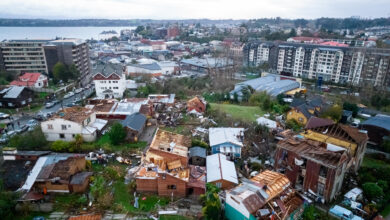Deforestation in Colombia: Progress, Setbacks and Challenges
The Ministry of Environment and the Institute of Hydrology, Meteorology and Environmental Studies Ideam presented the deforestation figures in Colombia for 2021. We tell you the positive, the negative, and the challenges that lie ahead.

Photo: Reuters
LatinAmerican Post | María Fernanda Ramírez Ramos
Listen to this article
Leer en español: Deforestación en Colombia: avances, retrocesos y desafíos
Deforestation in Colombia increased by 1.5% between 2020 and 2021, with a deforestation of 174,103 hectares. However, despite this increase, global figures show that there has been a downward trend in recent years, at least according to official information. The highest number of recent deforestation had been reached in 2017, with 219,552 hectares deforested.
The departments with the highest deforestation are Meta, Caquetá, Guaviare, Putumayo, Norte de Santander, and Antioquia, which account for 77% of the country's deforestation. According to the report, Antioquia has been the department that has historically been most affected by deforestation. However, last year there was a decrease of 23%. On the other hand, the data indicate that the main causes of deforestation are: "rasterization oriented to the usurpation and grabbing of land, the implementation of bad practices of extensive cattle ranching, crops for illicit use, the unplanned expansion of transport infrastructure, the illegal extraction of minerals, illegal logging and the expansion of the agricultural frontier in non-permitted areas".
The positives and negatives
Although some Natural Parks had less deforestation, others presented an increase in the number of deforested areas. Thus, deforestation was reduced in the National Natural Parks of La Paya (-17%), Paramillo (-28%), Tinigua (-6%), Sierra de La Macarena (-11%), Cordillera de los Picachos (- 30%) and the Nukak National Natural Reserve (-33%). However, in the Chiribiquete National Park there was a 13% increase in this phenomenon, compared to 2020, according to information from the Ministry of the Environment.
On the other hand, the director of Ideam, Yolanda González, pointed out that “These results allow us to identify that by the end of 2021 the country has 59.5 million hectares of natural forest, which continues to classify it as a forest country, where 52.1% of the continental and insular area is still forest”. Therefore, the correct management of these forests must be one of the priorities of the next government, as they represent one of the most precious assets for humanity in the fight against climate change.
Also read: Scientists Discover Microplastic in Blood, Meat and Milk of Farm Animals
It is especially important to pay attention to the departments that make up the Amazon, since it is one of the most threatened areas but at the same time of greatest importance and richness in biodiversity. In this regard, the World Wide Fund for Nature, WWF Colombia, "Between January and February of this year, more than 1,000 fires occurred in Caquetá, Guaviare and Meta, three of the 10 departments that comprise the Colombian Amazon and make up the so-called "arc of deforestation."
On the other hand, although the figure of 1.5% in forest loss seems small, it is not really good news. In fact, the organization Global Forest Watch , which monitors the state of forests in different regions of the world, indicates that during 2021 it was one of the 10 countries with the greatest loss of primary tropical forests during 2021, occupying the sixth position. The countries that lead this list are: Brazil, Democratic Republic of the Congo, Bolivia, Indonesia and Peru, which does not leave the South American region very well either.
The challenge: engaging communities
Without a doubt, deforestation constitutes a serious danger for the country's and the world's ecosystems. However, in order to solve this problem, it is necessary to make parallel economic and social plans for the people who currently live in the areas that are being deforested, because if productive alternatives are not provided to the inhabitants of the areas surrounding the tropical forests, they end up obtaining resources from activities related to deforestation.
On the other hand, the Global Forest Watch organization points out that in 2021 the loss of forests was high in the world. “In the 2021 Glasgow Leaders Declaration on Forests and Land Use , 141 countries collectively committed to “halt and reverse forest loss by 2030. Meeting this commitment will require that forest loss forests to decline consistently each year for the rest of the decade, a decline that is not yet occurring in all of the tropics," the organization says.




